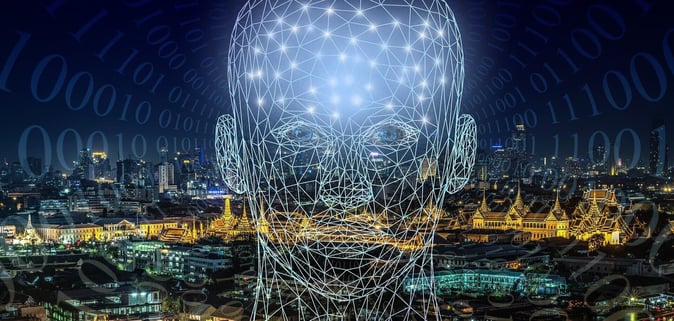AI Will Improve and Impact Construction. Image by Gerd Altmann from Pixabay
Technological innovations are revolutionizing the construction industry. Artificial intelligence (AI), BIM, robotics, cloud-based software, and 3D printing have all had dramatic impacts on the industry in the last decade, and their influence will grow in the coming years. In this article, we discuss how AI and machine learning influence the construction industry.
AI and Machine Learning will change the way the Architecture, Engineering, and Construction industry (AEC) works. Some of these changes are already underway. AI refers to intelligence demonstrated by machines, and often refers to machines that imitate functions we associate with the human mind such as problem solving, pattern recognition, and learning. Machine Learning is a subset of AI that employs statistical techniques to provide computer systems with the ability to learn from the data in the absence of explicit programming. Machine Learning can analyze large amounts of data and use that data to anticipate changes in the future. Exposure to more data improves a machine’s understanding and ability to make predictions
The use of AI in design is usually referring to Machine Learning algorithms. ProArchitect explored the use of AI and Machine Learning in design. Machine Learning itself can be subdivided into three categories: supervised learning, unsupervised learning, and reinforcement learning. In supervised learning, algorithms work with a set of data. For example, algorithms that are trained to recognize handwriting have a large set of input data, and you know what you want to have for output. Unsupervised learning has input data but no output variables or clear goal. Algorithms try to find the connections between the data and group things into categories. Reinforcement learning wants to find a behavior that gets them to some kind of reward maximization. Reinforcement learning is much of what would be involved in AI for design.
AI algorithms can design floor plans. ProArchitect explored the development of apartment floor plans using AI. Many floor plans already exist for apartments, so creating a floor plan could be done by comparing layout and needs with existing solutions. There are a finite number of combinations of how apartments can be laid out. With over a billion apartments in the world, you could find and copy a solution that fits your needs. AI is well suited to this type of large data problem. Millions of floor plans can be examined in a matter of minutes.
AI can be used by the design community to explore generative design wherein variations of a model can be evaluated to determine the ideal design. Generative design along with BIM could be used to optimize design safety, stability, efficiency, maintenance, and cost. AI can also identify clashes between different models created by different teams in the design phase.
Seff et al., introduced SketchGraphs in 2020 as part of a research project at Princeton University. SketchGraphs includes over 15 million sketches from CAD models and a data processing pipeline. The dataset enables generative modeling of sketches as well as conditional generation of potential constraints could improve design efficiency. In CAD this could mean suggesting next steps of design or offering corrections. SketchGraphs has been established to further research in this area.
AI has been used to improve construction safety, efficiency, and innovation. Scheduling is an important part of a construction project, and AI can help to prevent delays and conflicts. Construction already uses drones, robotics, and autonomous devices. Intelligent construction site monitoring allows for real time data analysis and prediction of problems, delays, or potential malfunctions. Facial and object recognition enable AI systems to detect hazards, security issues, and unsafe behavior. AI can provide insight, spot patterns, and enable forecasting.
Adoption of AI technology in the construction industry has lagged behind other sectors, as discussed in Constructible. While the construction industry traditionally has been slow to use new technologies, Machine Learning and AI can have a profound impact on a job site. Avoiding these technological advances will become difficult. 3D scans of construction sites to monitor progress and identify problems and safety hazards. Combined with building information modeling (BIM), AI can monitor BIM to identify problems and offer solutions. Since BIM is used at multiple stages in the building life cycle, AI can identify problems that arise after construction.
Labor shortages are a growing problem for the construction industry. AI can be used to allow construction companies to make hiring decisions based on data, and to allocate workers and resources to avoid waste and optimize scheduling.
 Design and Construction will be changed by technologies like Artificial Intelligence and Machine Learning. Image by Gerd Altmann from Pixabay.
Design and Construction will be changed by technologies like Artificial Intelligence and Machine Learning. Image by Gerd Altmann from Pixabay.
AI technology by its very nature will improve over time as systems learn and gain more data. The technology will have far reaching effects for the AEC community and will impact workflows from the conception and design stages, through facility management, and even demolition.

